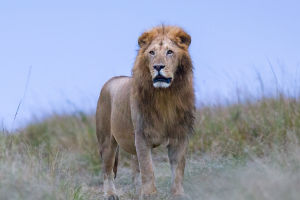Hello, Lykkers! Have you ever wondered why deer shed their antlers? It’s one of nature’s most fascinating cycles!
This intriguing process is a natural wonder that goes beyond what we might think.
Antler shedding happens annually and involves growth, loss, and regrowth. Let’s dive deeper into why and how this incredible transformation occurs.
The Purpose of Antlers
Antlers are not just ornamental; they serve vital roles in the lives of deer. During the mating season, known as the rut, male deer, or bucks, use their antlers to compete for dominance and attract mates. These antlers, which can weigh up to 40 pounds, are used in clashes that determine the strongest and most desirable buck. The larger and more branched the antlers, the more likely a buck is to win these battles and earn the attention of potential mates.
However, once the breeding season is over, these heavy antlers become unnecessary and even a hindrance. That’s when the shedding process begins.
The Shedding Process: A Natural Adaptation
Deer shed their antlers every winter, a process controlled by changes in hormone levels. The most significant factor is the drop in testosterone after the mating season. This decrease triggers cells at the base of the antlers, called osteoclasts, to break down the bone tissue. When the bone weakens enough, the antlers simply fall off.
Although this might sound painful, it’s not. The process is gradual, and deer often feel no discomfort. In fact, some bucks can even be seen shaking their heads to help dislodge the loosening antlers! Once shed, the antlers leave behind two small, exposed stubs on the buck’s head. These will serve as the foundation for new antlers in the spring.
Why Do Deer Regrow Antlers?
You might wonder why deer go through all this trouble to grow and then lose their antlers every year. The reason lies in the biology and survival strategies of deer. Growing new antlers each year allows bucks to be in top shape when the next mating season comes around. The new antlers are often larger and stronger, giving the buck an advantage over younger or less experienced rivals.
Another theory is that antler shedding reduces the risk of injury or entanglement during harsh winter months. With lighter heads and no large antlers to worry about, deer can move more easily through thick brush and conserve energy when food is scarce.
When And Why Bucks Shed Their Antlers | Shed Hunting 2020
Video by Whitetail Properties
What Happens to Shed Antlers?
One of the most interesting aspects of antler shedding is what happens to the antlers once they’re on the ground. In the wild, these shed antlers don’t go to waste. Smaller animals like squirrels, mice, and porcupines often chew on them to get valuable minerals such as calcium and phosphorus. This nutrient recycling helps other animals survive, especially during the colder months when food is hard to come by.
Additionally, these discarded antlers can serve as a kind of “currency” in some ecosystems. Other male deer might find them and assess their size and structure, using them as benchmarks to gauge the competition for the coming season.
Antlers and Age: What They Can Tell Us
Antlers can also tell us a lot about a deer’s age and health. For instance, older bucks tend to grow larger and more complex antlers, while young bucks have smaller, simpler ones. The health of a buck also plays a role; well-nourished deer can produce heavier and more symmetrical antlers, whereas malnourished deer may have irregularly shaped antlers.
Moreover, antler size is influenced by genetics, diet, and environmental factors. This is why two bucks of the same age can have vastly different antler sizes.
A Spectacle of Renewal
By spring, the cycle begins anew. Fresh velvet-covered antlers start to sprout, growing at a remarkable rate of up to an inch per day! This rapid growth makes antlers one of the fastest-growing tissues in the animal kingdom. As they grow, these new antlers are covered in a soft, fuzzy layer known as velvet, which is rich in blood vessels and supplies nutrients to the developing bone. By the time the rut season returns, these antlers will have hardened, transforming into powerful tools once again.
So, Lykkers, next time you’re in the woods and spot a pair of discarded antlers, you’ll know just how special they are. They represent not just a cycle of growth and renewal but also a story of survival, strength, and adaptation.


